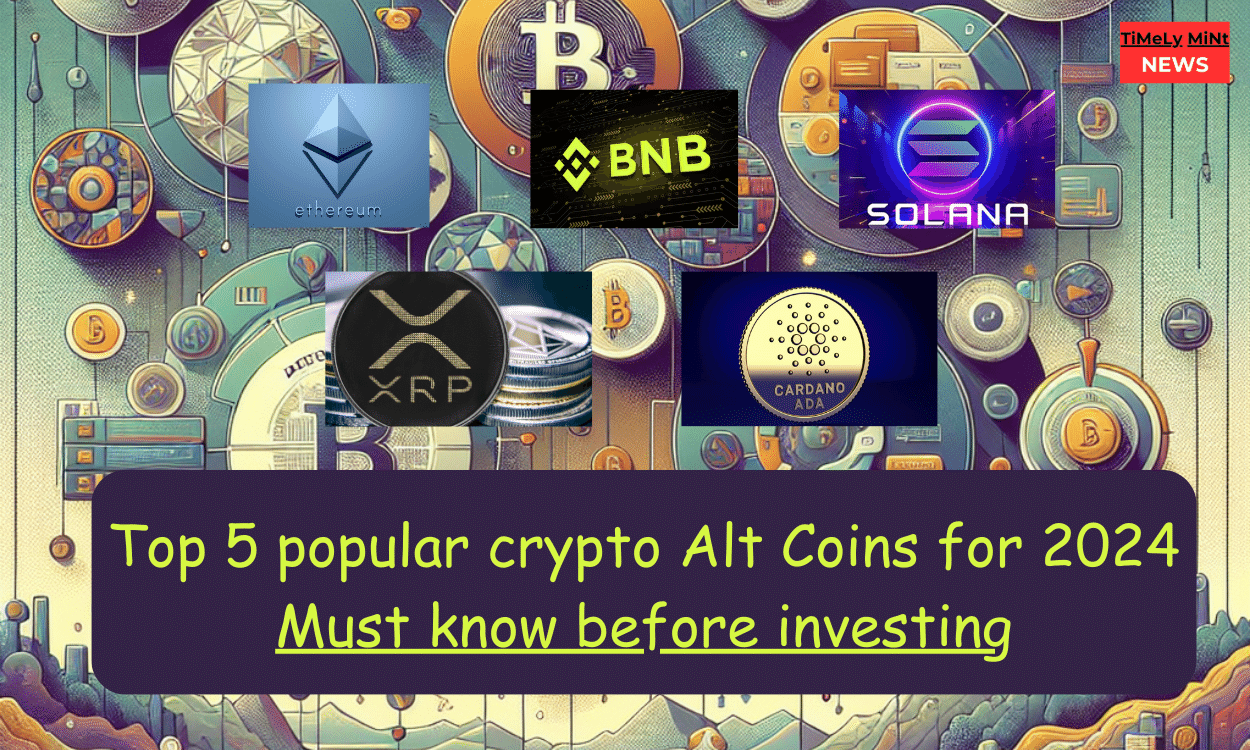Beyond Bitcoin, the crypto market has seen tremendous growth and adoption of altcoins – alternative cryptocurrencies that aim to improve aspects like scalability, transaction speeds, use cases, and more.
As the Crypto market matures in 2024, Bitcoin still dominates with 50% market share. However, prominent Crypto altcoins like Ethereum, BNB, Solana, XRP, and Cardano especially have seen surges in their valuation and real-world usage across areas like decentralized finance (DeFi), non-fungible tokens (NFTs), centralized exchanges, payments, interoperability, and more.
Understanding the top altcoins and their real-world utility can help crypto investors make more informed portfolio decisions. Here is an in-depth look at the 5 leading altcoins right now by Run Rate of their market capitalization over time since launch, excluding stablecoins:
1. Ethereum (ETH)
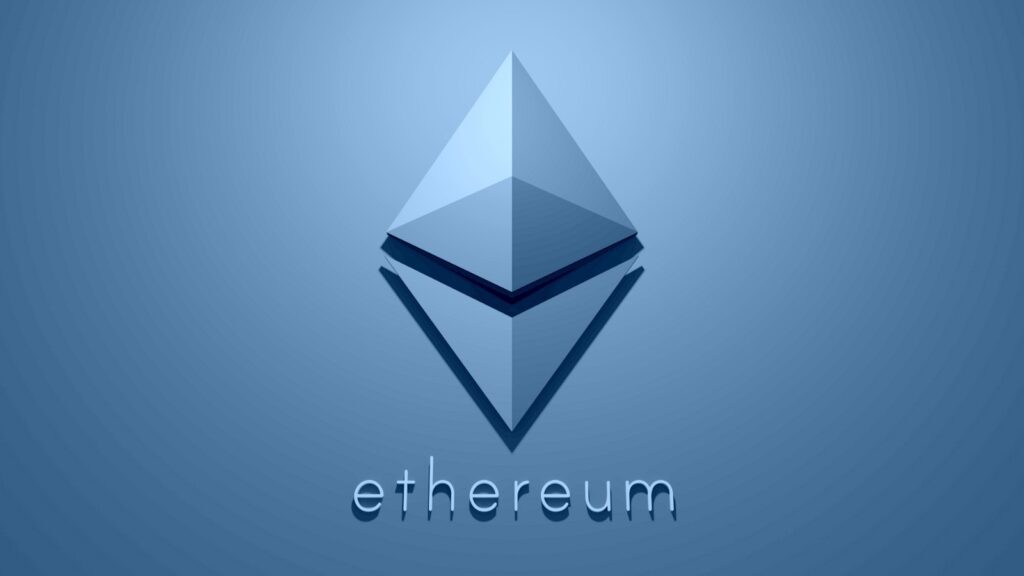
Launch: 2015
Ethereum is the second-largest cryptocurrency and the leading altcoin used for decentralized applications (dApps), smart contracts, DAOs, NFT marketplaces, metaverse projects, and more.
Created by Vitalik Buterin in 2015, Ethereum extended Bitcoin’s vision by allowing developers to build and deploy all kinds of decentralized apps (dApps) and projects beyond just payments. This opened up a whole new realm of possibilities.
The native token of Ethereum is Ether (ETH). It powers transactions, operations, and payments across the Ethereum blockchain. ETH also facilitates access to the burgeoning ecosystem of dApps, DeFi protocols, DAOs, NFT marketplaces, games, metaverse worlds, and more built on Ethereum.
Over 3000 dApps have been built on Ethereum, spanning categories like:
- Decentralized Finance (DeFi): Lending apps, exchanges, stablecoins, derivatives, prediction markets, etc. Eg. Uniswap, Aave, Compound
- NFT Marketplaces: Opensea, Rarible, NBA Topshot etc
- DAOs: Decentralized Autonomous Organizations like MakerDAO, Uniswap, Lido etc
- Gaming: CryptoKitties, Gods Unchained, Axie Infinity etc
- Metaverse: Decentraland, The Sandbox, Cryptovoxels etc
This demonstrates Ethereum’s dominance as the leading dApp development platform, given its first-mover advantage, developer network effects, ease of building dApps, and more.
Major improvements are also underway on Ethereum to boost scalability, speed, security, and sustainability. The recent Merge upgrade in 2022 marked Ethereum’s transition to a proof-of-stake consensus model.
This is laying the foundation for future improvements like sharding that can drastically boost transaction throughput and reduce gas fees on the network. Ethereum has the potential to scale to over 100,000 transactions per second based on optimistic rollup techniques as well.
As Web3 and metaverse projects continue growing exponentially, Ethereum is poised to be the leading blockchain platform powering this user-owned internet of the future.
Key Reasons to Watch Ethereum
- Dominant player in dApps, DeFi, NFTs, Metaverse, & Web3
- Upgrades to boost speed, scalability, security, and sustainability
- Backed by large developer community and network effects
- Powers access to growing ecosystem of Ethereum-based dApps
Prominent Ethereum supporters and developers include Vitalik Buterin, Joseph Lubin, Vitalk Buterin, Anthony Sassano, Anthony Di Iorio, Charles Hoskinson, Gavin Wood, Joseph Lubin, and others.
Major crypto exchanges and wallets that support Ethereum include Coinbase, Binance, Kraken, Gemini, Crypto.com, Metamask, and more.
2. BNB (BNB)
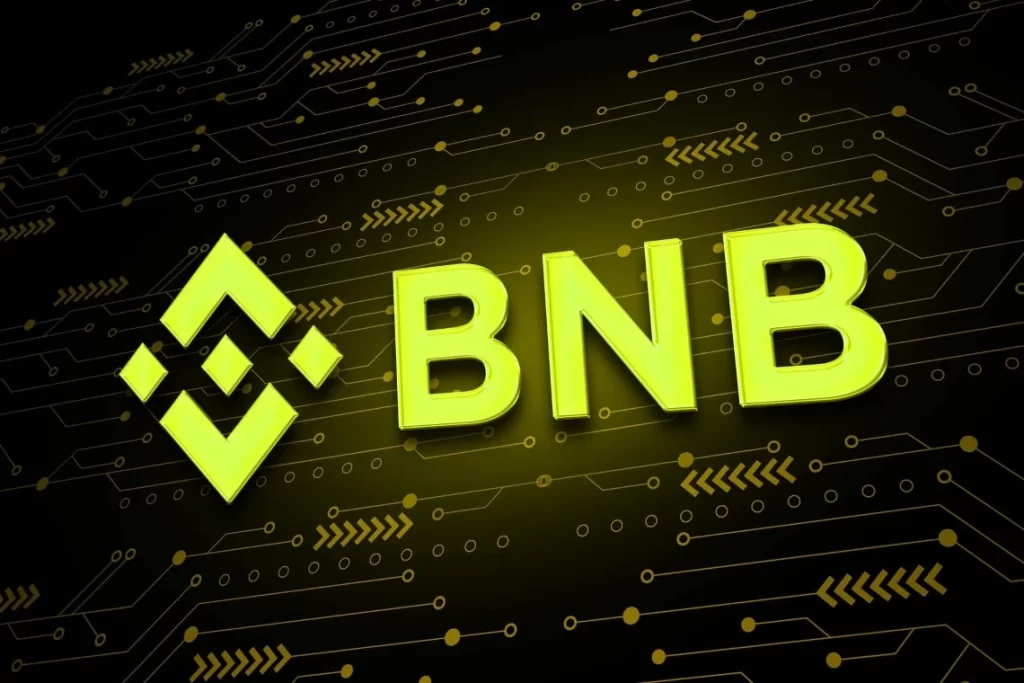
Launch: 2017
BNB is the native utility token of the Binance ecosystem, the world’s largest cryptocurrency exchange. Initially launched through an ICO in 2017, BNB has seen tremendous growth in market cap and utility through Binance’s global expansion.
As a centralized exchange token, BNB aims to power payments, transactions, trading fee discounts, token sales, and more across the various crypto trading platforms developed by Binance. This includes:
- Binance Exchange: World’s largest crypto spot & derivatives exchange
- Binance DEX: Decentralized exchange developed by Binance
- Binance Pay: Crypto payments solution
- Binance Earn: Crypto & DeFi lending and savings
- Binance NFT: NFT Marketplace
- Binance Metaverse: Virtual metaverse platform
- Binance Academy: Educational portal
This demonstrates Binance’s rapid pace of launching complementary crypto products and services across trading, DeFi, NFTs, education, metaverse, and more.
BNB thus serves as an access token to unlock benefits across Binance’s growing ecosystem. Key utility benefits of BNB include:
- Pay trading and transaction fees at a discount
- Participate in new token sales on Binance Launchpad
- Pay for travel bookings, entertainment services, and more on Binance Marketplace.
- Access exclusive benefits on Binance Earn lending platform
- Participate in Launchpad token sales
Burning BNB also helps manage its total circulating supply. Over time, this can positively impact BNB’s valuation.
Thus BNB aims to offer both utility benefits and potential price appreciation as adoption of Binance products and services grows globally. This is complemented by investments in Web3, metaverse projects, blockchain gaming, NFTs and more to expand use cases.
Key Reasons to Watch BNB
- Critical to popular Binance crypto ecosystem
- Powers payments, trading discounts, token sales
- Limited circulating supply with coin burns
- Investment in growth areas like NFTs, gaming, metaverse
3. Solana (SOL)
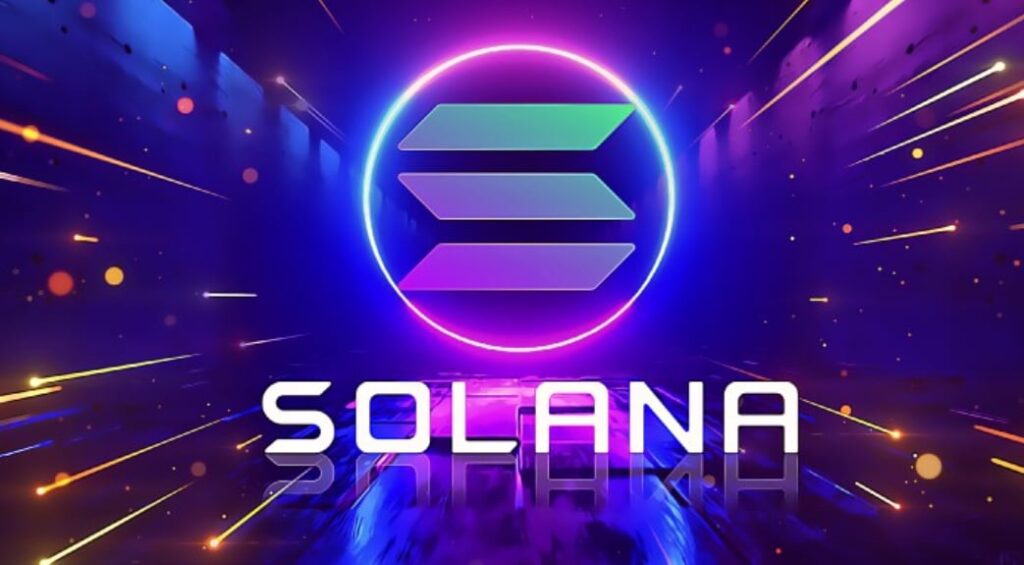
Launch: 2020
Solana is one of the fastest growing layer-1 blockchain platforms, offering high scalability capable of 50,000+ transactions per second with 400ms block times. This makes it a compelling platform for building and using dApps.
Created by Anatoly Yakovenko in 2020, Solana combines unique proof-of-history and proof-of-stake hybrid consensus mechanisms to achieve high speed and scalability. This allows it to support emerging Web3 apps from DeFi to NFTs, gaming, social, and more.
The Solana ecosystem continues to expand, with over 5000 projects spanning:
- DeFi apps like Serum DEX, Raydium, Francium etc
- NFT Collections like Degenerate Ape Academy, SolPunks etc
- Gaming dApps like Star Atlas, Aurory, RaceFi etc
- Wallets & Tools like Phantom, Solflare, Solanart etc
Despite periodic outages, Solana adoption continues growing driven by its speed, low fees, and ease of building dApps that can onboard Web2 users.
Solana is backed by one of the most active crypto investment firms – Multicoin Capital – along with support from FTX, Alameda Research, and other major crypto investors. This provides strong financial backing to fund its development.
Ongoing improvements in areas like transaction caching, mempool management, RPC load balancing, and more make Solana’s network increasingly robust over time.
Key Reasons to Watch Solana
- Highly scalable network capable of fast, low-cost dApps
- Rapidly expanding ecosystem of DeFi, NFT, and Web3 apps
- Backing from Sam Bankman-Fried, Multicoin, FTX, Alameda etc
- Onboarding mainstream users with easy-to-use dApps
Prominent developers contributing to Solana include Anatoly Yakovenko, Greg Fitzgerald, Stephen Akridge, Raj Gokal, and others.
Exchanges that support Solana include FTX, Binance, Coinbase, Kraken, KuCoin, Gate.io, and Huobi Global among others.
4. Cardano (ADA)
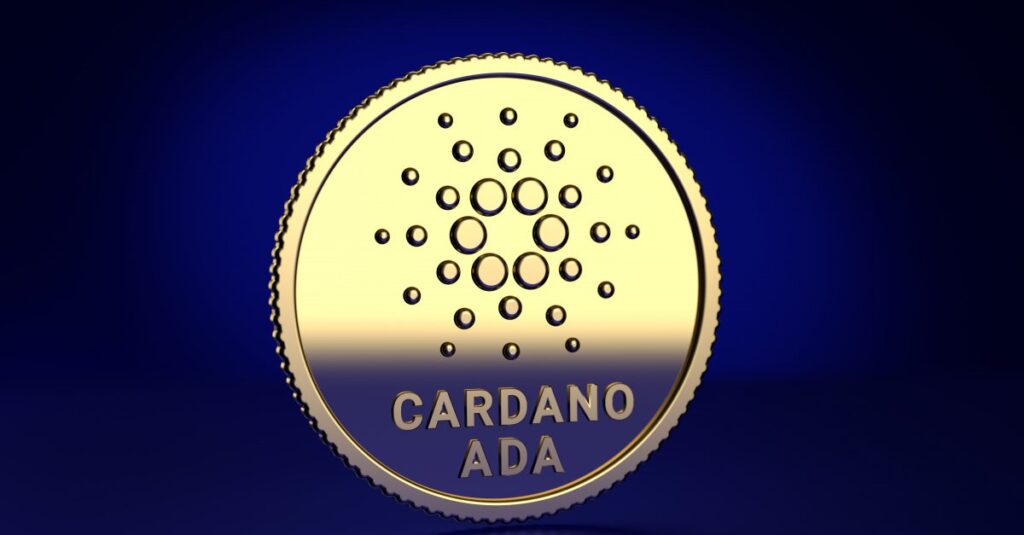
Launch: 2017
Cardano is a proof-of-stake blockchain network that aims to offer scalability, interoperability, and sustainability for decentralized applications.
Started in 2017 by Ethereum co-founder Charles Hoskinson, Cardano uses peer-reviewed academic research principles to build its technology. It has slowly and steadily worked towards launching smart contract capability and decentralized applications on its network.
The native token of Cardano is ADA, which facilitates transactions, operations, and interactions across the Cardano blockchain. Staking ADA can also earn passive rewards to participants while helping secure the network.
A key feature of Cardano is its multi-layer architecture consisting of:
- Cardano Settlement Layer (CSL): Accounting infrastructure layer
- Cardano Compute Layer (CCL): Smart contracts and dApp layer
- Cardano Control Layer (CCL): On-chain governance layer
This modular framework allows easy upgrades, maintenance, and flexibility for future improvements.
Initially launched with only the CSL handling ADA transactions, Cardano’s Alonzo hard fork upgrade in 2021 enabled smart contract capability on the CCL. This opened the doors for developers to now build decentralized apps, DeFi protocols, NFTs, games, metaverse worlds and more on Cardano.
Some initial projects built on Cardano span:
- DeFi: Liqwid Finance (LQ), Ardana (DANA), Revuto, SundaeSwap etc
- NFTs: Clay Nation, SpaceBudz, Pavia etc
- Gaming: Cardano Warriors, Cornucopias etc
Cardano is now positioned to take advantage of its academic rigor and research-driven approach towards scalability, interoperability, and sustainability of its network and ecosystem. Real-world adoption remains in early stages but can pick up pace.
Upcoming improvements like sharding, Hydra off-chain scaling, and more can boost its transaction speeds and throughput in the long term. Interoperability solutions to connect with external blockchains also continue progressing.
Key Reasons to Watch Cardano
- Active open-source community of global developers
- Multi-layer architecture for flexible upgrades
- Prioritizes scalability, interoperability, sustainability
- Backed by academic rigor and research
Cardano was founded by Charles Hoskinson along with several professors and researchers like Aggelos Kiayias, Philip Wadler, and others.
Exchanges that support ADA include Coinbase, Kraken, KuCoin, Gate.io, Gemini, Binance, OKX, and more.
5. XRP (XRP)
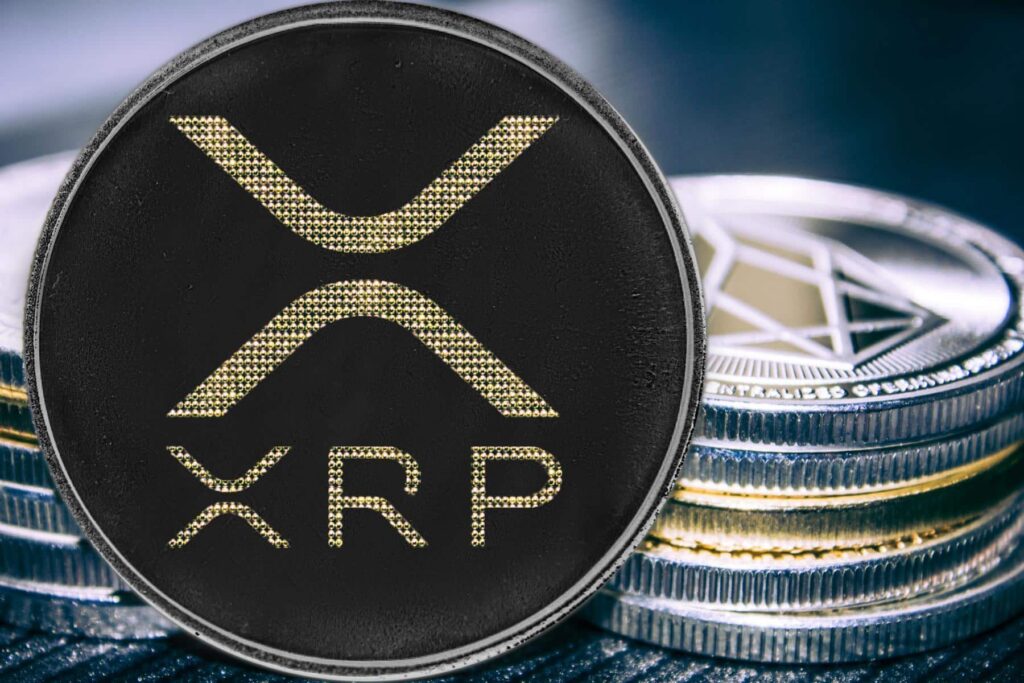
Launch: 2012
XRP is one of the oldest and largest cryptocurrency projects focused on payments and liquidity for financial institutions.
Created in 2012, XRP aims to offer fast, affordable, and more reliable cross-border payment settlements between banks and financial institutions compared to slow and expensive correspondent banking.
Over 300 banking and financial institutions across 40 countries have partnered or trialed Ripple’s distributed ledger technology for usage across areas like:
- Global Payments providing liquidity for cross-border transactions
- Treasury & FX Management such as FX hedging, escrow, and more
- Trade Finance including letters of credit, working capital optimization, invoices etc
XRP is the native token that powers the XRP Ledger. Banks can use XRP for on-demand liquidity when making cross-border payments and forex transactions. XRP settles transactions in 3-5 seconds, minimizing liquidity costs and risk.
However, XRP faces an ongoing lawsuit from the SEC in the US over whether it is an unregistered security. This has impacted adoption from US-based financial institutions so far.
Still, Ripple continues to sign partnerships across financial institutions in Asia, EMEA, and Latin America. It is also collaborating across areas like CBDC projects as well as crypto trading and blockchain interoperability.
For example, Ripple has partnered with:
- Litecoin Foundation to improve crypto payments across chains
- Palm NFT Studio to enable XRP payments for NFTs
- SBI Remit to facilitate payments between Japan and Thailand
This demonstrates use cases going beyond just cross-border bank transfers.
Improvements in areas like federated sidechains, NFT functionality, DeFi integrations, and interledger protocol are also expanding XRP’s capabilities.
Key Reasons to Watch XRP
- Established for global bank payments and liquidity
- Fast, affordable settlements for financial transactions
- Growing use for remittances, NFT payments, and beyond
Ripple counts over 300 financial institutions across 40 countries amongst its partners and customers for usage of its distributed ledger solutions.
Exchanges that support XRP trading include Coinbase, Kraken, Binance, Crypto.com, KuCoin, Gate.io, and more.
Conclusion
As we move deeper into 2024, the crypto market is maturing with increased real-world utility and adoption of altcoins beyond Bitcoin. Ethereum continues leading smart contract development, while Solana and Cardano aim to be more scalable and sustainable blockchains for decentralized apps.
Exchange tokens like BNB fuel the growth of centralized crypto ecosystems catering to traders. Payment-focused blockchains like XRP enable faster cross-border settlements. And more asset-backed stablecoins offer relative stability against volatility.
While risks remain due to regulation and volatility, the top altcoins clearly demonstrate real-use cases in areas like DeFi, NFTs, metaverse, Web3, payments, decentralized governance, and more.
Doing thorough research to determine promising projects, underlying tokenomics, roadmaps, leadership, and usage is key before investing. But allocating a small portion into leading altcoins can enhance portfolio diversification.
Frequently Asked Questions
Q1. How many crypto altcoins are there?
There are over 20,000 cryptos in existence as per CoinMarketCap. However, Bitcoin dominates with 50% market cap share, followed by smart contract platforms like Ethereum and network tokens like BNB, XRP, SOL and others in the top 10.
Q2. What are the top 5 altcoins to buy now?
Based on market cap and ecosystem growth, top altcoins include Ethereum, BNB, Solana, Cardano and XRP. Do thorough research before deciding which to invest in.
Q3. How do altcoin prices compare to Bitcoin?
Altcoin prices often follow Bitcoin’s price movements, but at higher volatility. Some outperform Bitcoin in bull markets but fall faster in bear markets. Analyze their relative valuation before investing.
Q4. What will be the next big altcoin?
Keep an eye on smart contract platforms like Polkadot, Polygon and Cosmos that can challenge Ethereum. Exchange tokens like FTT also have potential. Analyze their technology, tokenomics and backers.
Q5. How are altcoin prices determined?
Like Bitcoin, prices are driven by supply-demand dynamics in the market based on adoption, speculation and perceived utility as digital assets. News also drives hype cycles impacting valuations.
Q6. Should I invest in altcoins or Bitcoin?
Bitcoin is viewed as a relatively stable store of value. Altcoins can offer higher growth potential but have higher volatility. Allocate based on your risk appetite after analyzing their utility.
Q7. How do I research promising altcoins?
Analyze the leadership team, community strength, token distribution schedule, transparency, technology capabilities, roadmap, usage and adoption by developers/enterprises before deciding.
Q8. What are the risks of investing in altcoins?
Regulatory uncertainty, high volatility due to speculation, technology risks like bugs, inability to scale usage, loss of community support, competition and failure to deliver roadmap are key risks to analyze.
Q9. How much of my portfolio should I allocate to altcoins vs Bitcoin?
Financial planners typically recommend allocating up to 5% into crypto including a mix of Bitcoin and altcoins based on risk appetite. Rebalance periodically based on performance.
Q10. Which exchanges support trading top altcoins?
Leading centralized exchanges like Coinbase, Binance, FTX, Crypto.com etc support spot trading and derivatives across top altcoins like Ethereum, Solana, Cardano, XRP etc.

